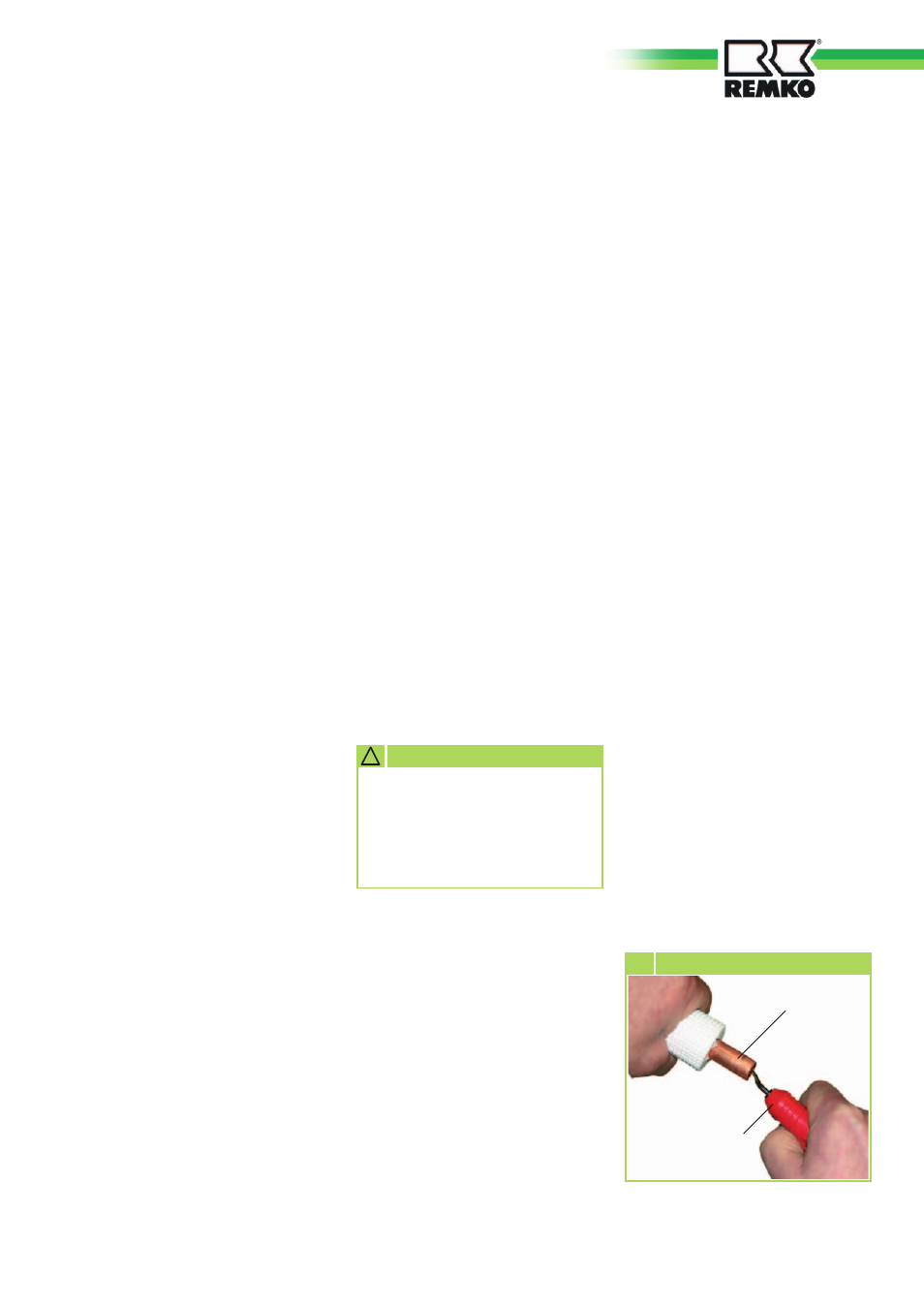REMKO RXT xxx DC User Manual
Page 19

The units are factory filled with
dry nitrogen to check for leaks.
The pressurised nitrogen is
released when the union nuts
are loosened.
!
CAUTION
Connecting the refrigerant pipes
The on-site connection of the
refrigerant pipes is carried out on
the right side of the units.
It may be necessary to fit
a reducer or flared adapter to the
indoor unit. These fittings are
included with the indoor unit as
an accessory kit. Once installed,
the connections must be insulated
to prevent vapour diffusion.
Refrigerant pipe
Deburrer
6 Deburring the refrigerant pipe
Unit installation
Wall installation
The unit is attached by means of
a wall bracket, taking account of
the air outlet side located towards
the top of the unit.
Ceiling installation
The unit is attached by means
of the integrated ceiling bracket,
taking account of the air outlet
side, which is located on the front
of the unit.
1. Mark the mounting points on
the structurally permissible
building sections according
to the dimensions of the wall
bracket.
2. Remove the housing's break
out opening if necessary.
3. Hook the unit on to the
previously attached bracket.
4. Connect the refrigerant pipes,
electrical cables and condensate
line to the indoor unit as
described below.
5. Check again that the unit is level.
1. Mark the mounting points on
the structurally permissible
building sections according to
the dimensions of the ceiling
bracket.
2. Remove the housing's break
out opening if necessary.
3. Hook the unit onto the four
previously installed screws/
threaded rods.
4. Fit the unit such that it is
attached 5 mm lower in the
connection area (air intake)
than on the air outlet side!
5. Connect the refrigerant
pipes, electrical cables and
condensation pipe to the indoor
unit as described below.
3. Before flanging the refrigerant
pipes, ensure that the union nut
is fitted on the pipe.
4. Prepare the refrigerant pipes as
shown below (Fig. 6+7).
5. Verify that the shape of the
flange is correct (Fig. 8).
6. First connect and hand-tighten
the refrigerant connections
to ensure they are correctly
seated.
7. Now fully tighten the fittings
using 2 suitably sized open-
ended spanners. Use one
spanner to counter the force
when tightening the fitting
(Fig. 9)
.
8. Use only diffusion-tight
insulation hoses designed for
this temperature range.
9. Route the refrigerant pipes from
the indoor unit to the outdoor
component. Ensure that they
are adequately fastened and
take measures for the oil return,
if necessary!
The following instructions describe
the installation of the refrigerant
circuit and the assembly of the
indoor unit and the outdoor
component.
1. The required pipe diameters are
given in the table "Technical
data".
2. Remove the factory-fitted
protective caps and union nuts
on the connections and use
these during installation.
19
